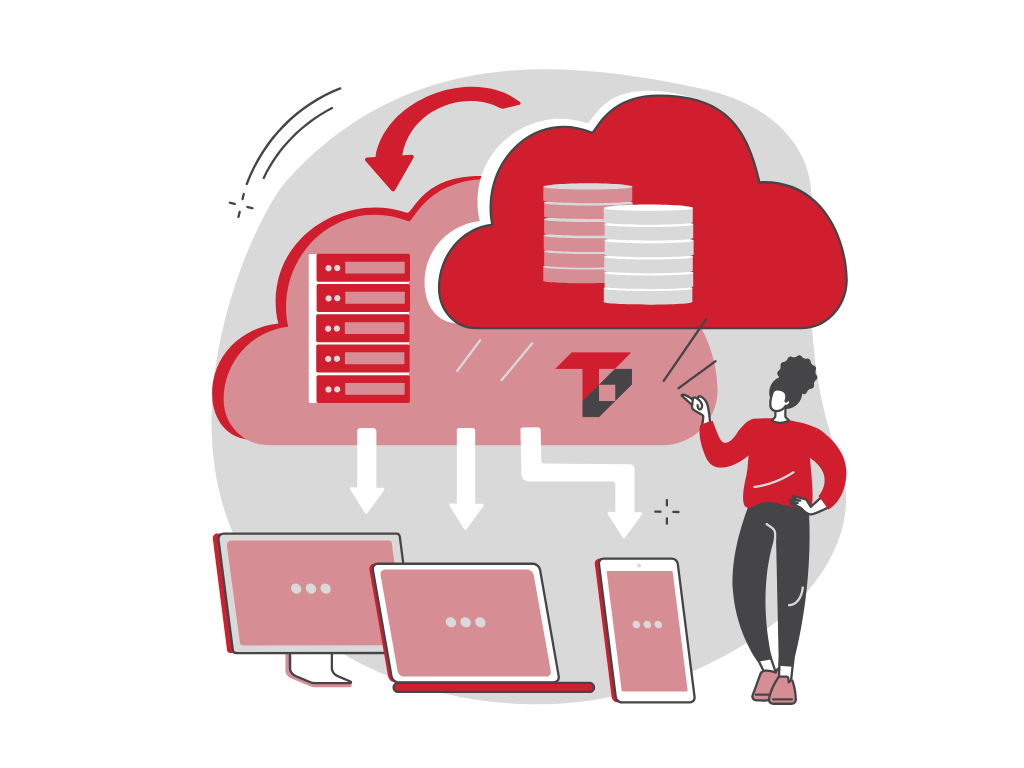SOLUTIONS FOR SAFE BUSINESS
ON PREMISES vs CLOUD
Technical protection devices as well as telecommunications can be installed on location (on premises) or in the cloud.
When devices are installed on premises they are physically present at the user's location, while those that are located in the cloud have virtualized resources i.e. they are not physically located at the user's location.
For both variants, TechGroup can do a plan, setup and be in charge of maintenance.
Both approaches have the same topology, i.e. they are based on the server-client architecture.
This means that the "brain" of the system (databases, recorded materials, analytical processing, integration with other systems) are located on servers, while in this case the clients are mostly computers, but can also be cameras, controllers, or any other elements of the system that exchange data with servers.
SYSTEM ON PREMISES
System on premise is a traditional method that requires all components of a system to be installed on the site itself and owned by the end user. This ensures that both hardware and software are fully controlled and monitored by the end user. Such a solution is necessary when the system must be isolated from external access (the Internet) so that the data does not go out of that system in any way.
This approach has its advantages, seen from a security angle, but on the other hand it opens up a number of requirements that the end user must meet throughout the life cycle of the system. The basic requirements would be:
- Manpower to manage and maintain the system
- Investments for the maintenance of key hardware and software components, both in the warranty and out-of-warranty period
- Investments in protection against intrusion into the system, both externally and internally (Cyber security)
- Investments in periodic renewal of hardware components

SYSTEM IN CLOUD
Cloud access, on the other hand, was created in response to the challenges that system users encounter when those systems are installed with them, on premises.
The idea behind this approach is that the end user subscribes to a service that takes place in the cloud (MS Office, video surveillance, access control, etc.). In return, the service provider (usually the system manufacturer) ensures that the system is always up-to-date, that it is safe from cyber attacks, invests in maintaining and restoring the system so that the service is always available. This further means that the end user is exempt from all the mentioned investments related to the "brain" of the system and is left with only the investment in the hardware (clients) that must be located with him on the site.

The cloud approach is becoming increasingly accepted worldwide as owners of systems that plan their business long-term (which are important to Capex and Opex) in this way reduce business risks and increase the profitability of their business systems.
They can better plan the cost of doing business because the subscription is a clear and precise thing, while on the other hand, manufacturers and cloud service providers give a much greater guarantee on client parts of the system in order to keep users with them. This further reduces the cost of investing in this approach and reduces the TCO (Total Cost of Ownership)
We offer our existing and future customers free consulting services both for the renewal or improvement of one of the existing systems, as well as for the implementation of the new one.





